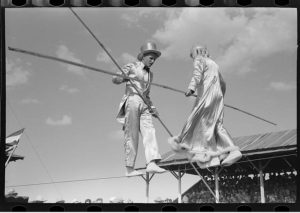 Imagine you are at a small party and the topic of Olympic swimmers comes up. All of a sudden your heart flutters, your palms get wet, and your breath races. You have the perfect Olympic swimmer joke and you are confident that its delivery will make you look like a comic hero.
Imagine you are at a small party and the topic of Olympic swimmers comes up. All of a sudden your heart flutters, your palms get wet, and your breath races. You have the perfect Olympic swimmer joke and you are confident that its delivery will make you look like a comic hero.
You clear your throat, everyone’s eyes fall on you, and without your usual restraint you start telling the joke. You wave your arms and raise your eyebrows as the group cautiously listens.
Finally, you let them have the punch line and you laugh nervously–but everyone is silent. The room grows hot, your face flushes, and someone says, “Anyways, like I was saying…”
Jokes have the power to make people laugh, but they also have the ability to make you look …slightly off.
That’s why business leaders have to be especially careful.
But, Mark Twain is here to help.
In his essay How to Tell a Story Mark Twain lays out four basic qualities that make jokes and stories funny.
They are as follows:
1. “String incongruities and absurdities together in a wandering and sometimes purposeless way, and seem innocently unaware that they are absurdities.”
Twain believed that American humor was built on dry delivery. By adopting a distant, aloof, tone a person can get laughs as they “string incongruities and absurdities” together. The key element, for Twain, is the maintenance of the joke teller’s innocence.
2. “Slur… the point.”
Twain believed that detours in jokes are funny. It’s better to add details, tangents, and parenthetical observations to a joke rather than recite its summary. It builds tension and it disguises the joke’s final destination.
3. “[Drop]… a studied remark apparently without knowing it, as if one were thinking aloud.”
Twain felt that a joke teller should remark to himself “dreamily” and “in a soliloquizing way” in order to get more laughs. Wistful, off-the-cuff, public dialogue with oneself adds humor because it maintains the joke-teller’s innocence while sounding natural an unscripted. Today’s popular stand-up comedians do this all the time. After making a statement, they’ll address themselves in a softer, more confused, tone which adds humor and makes their characters seem honest and human.
4. “The pause.”
Twain writes, “The pause is an exceedingly important feature in any kind of story…It is a dainty thing, and delicate, and also uncertain and treacherous; for it must be exactly the right length–no more and no less–or it fails of its purpose and makes trouble. If the pause is too short the impressive point is passed, and [and if too long] the audience have had time to divine that a surprise is intended–and then you can’t surprise them, of course.”
For Twain the pause is the most important element of a good joke, but it’s also the hardest to master. It takes practice and the ability to study the reactions of the people around you. Twain is most weary of the short pause since it disguises the whole point of a joke. That said, when you’re unsure of how long too pause—it’s probably safer to indulge in a longer one.
Mark Twain believed that the hardest story to tell was the humorous one. He writes, “The humorous story is strictly a work of art–a high and delicate art.”
I’d add that telling a humorous story is also a scary and dangerous art. But after learning Twain’s four ingredients to successful humor the task of telling a joke feels less daunting.



